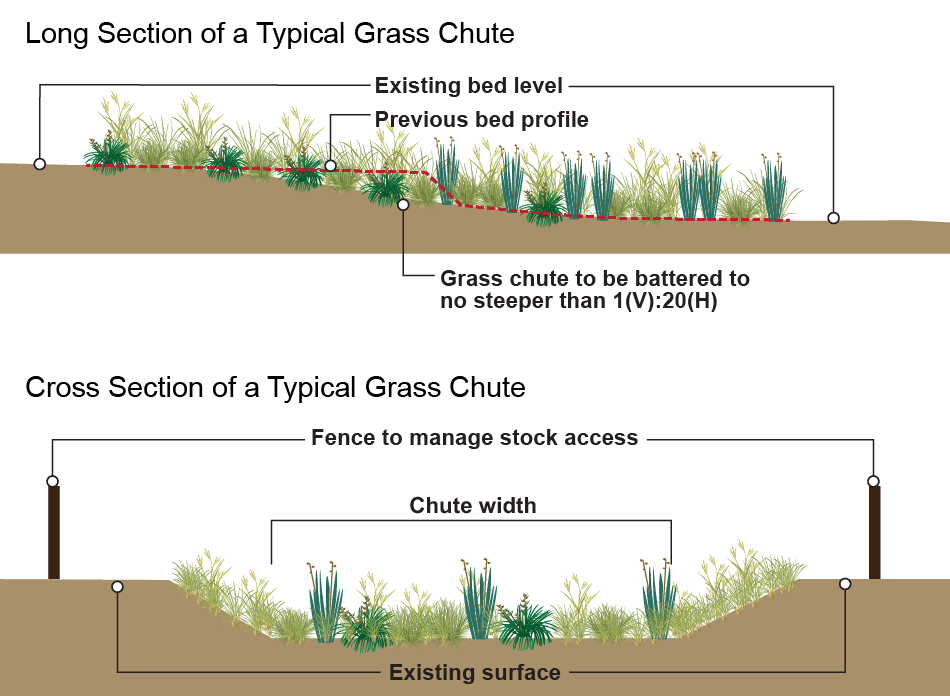|
|
Grass chutesA grass chute is a relatively short, steep earthen channel arrangement that involves excavation works to reduce the slope (battering). The works usually occur at a head-cut or knickpoint feature associated with channel/floodplain deepening processes. The reduced slope chute improves bed slope stability, riverbank stability and creates more favourable conditions for vegetation establishment. Vegetation may comprise native and/or introduced species, however, native species are often preferred as introduced species risk becoming invasive weeds. A suitable vegetation composition may include grasses, rushes, reeds and/or shrubs. Potential benefits from this intervention:
Potential negative implications from this intervention:
Intervention considerations:
Last updated: 23 June 2022 This page should be cited as: Department of Environment, Science and Innovation, Queensland (2022) Grass chutes, WetlandInfo website, accessed 8 May 2025. Available at: https://wetlandinfo.des.qld.gov.au/wetlands/management/rehabilitation/rehab-process/step-4/intervention-options/grass-chutes-mod.html |

 — Department of the Environment, Tourism, Science and Innovation
— Department of the Environment, Tourism, Science and Innovation


